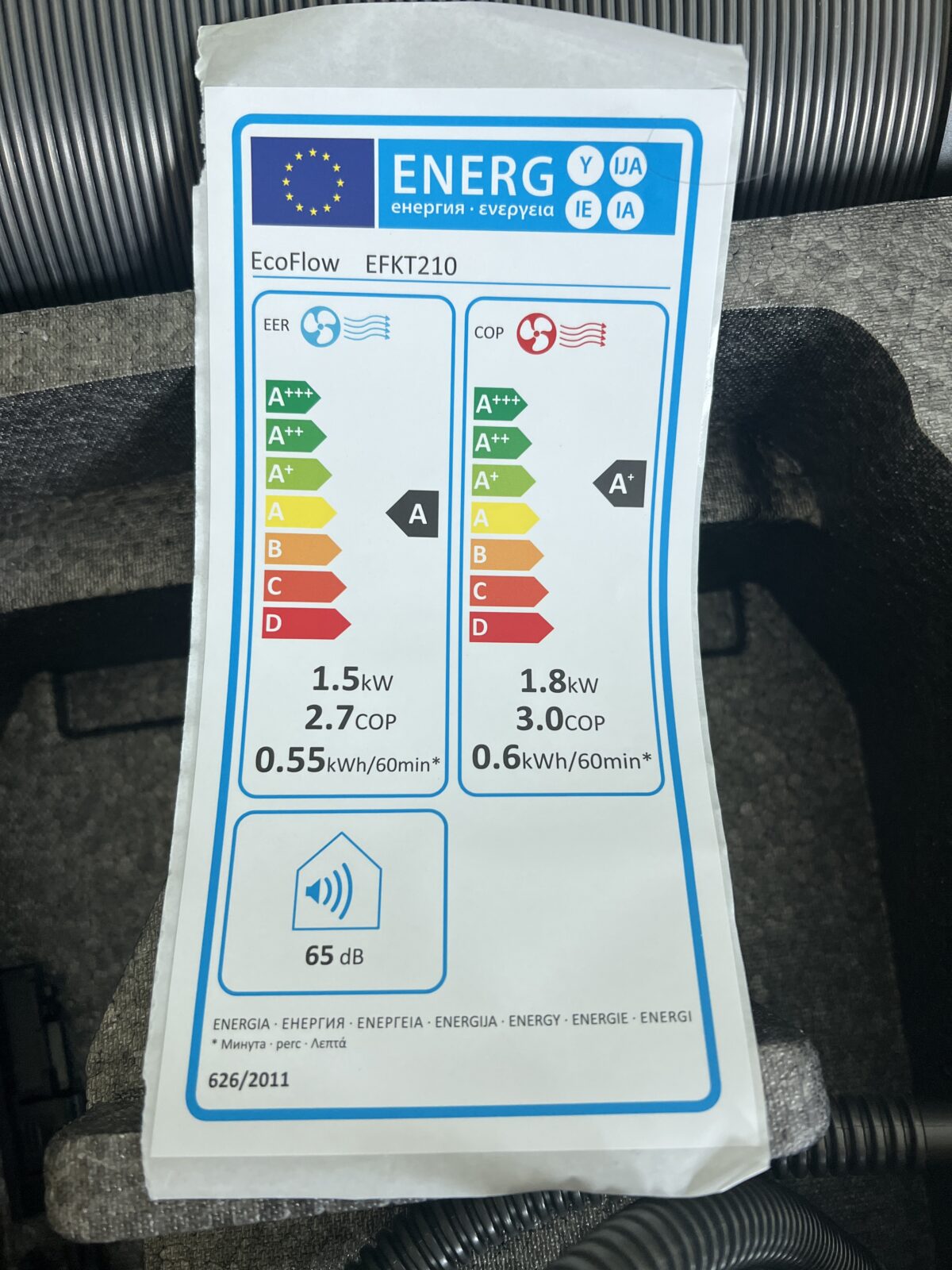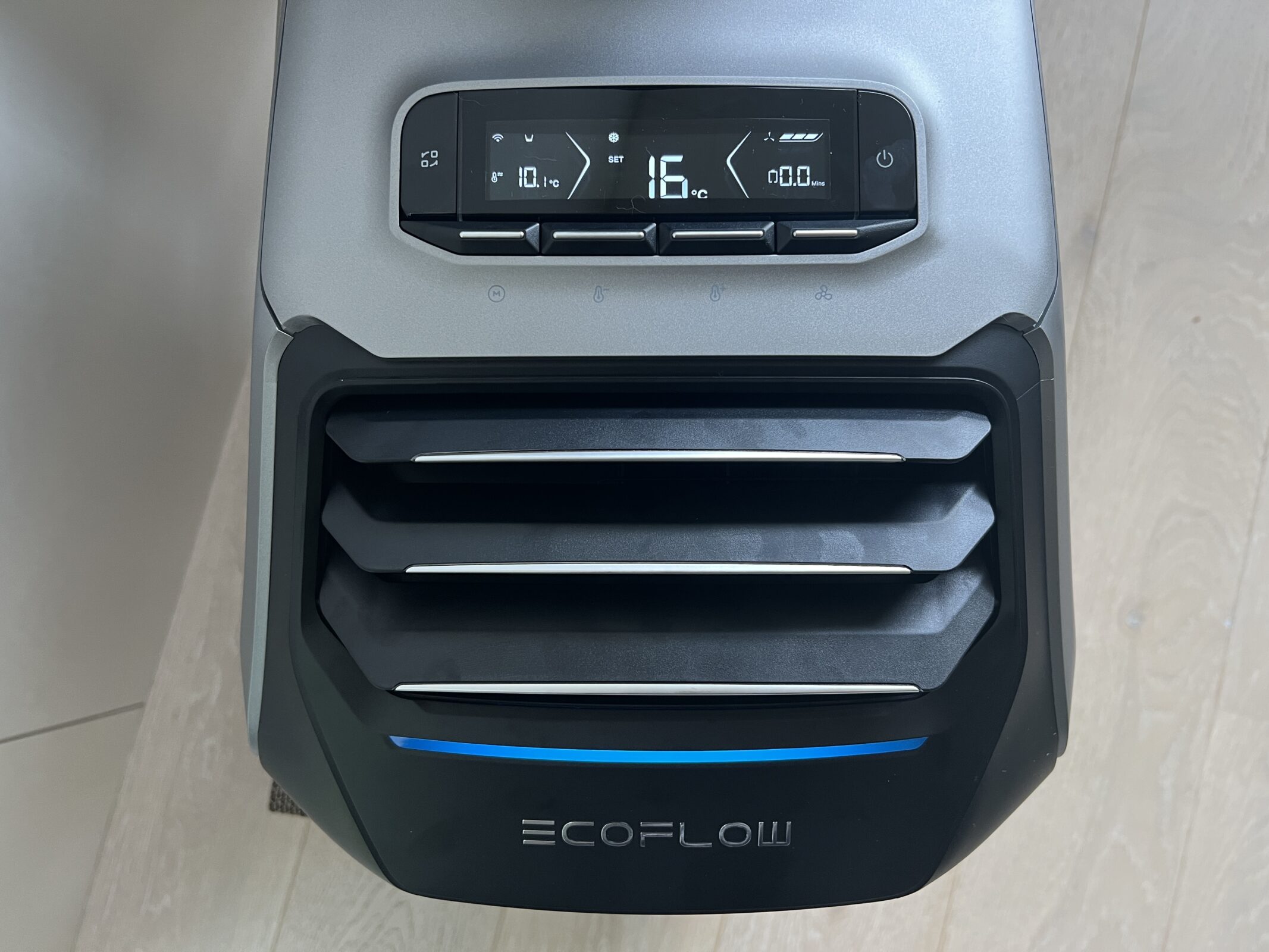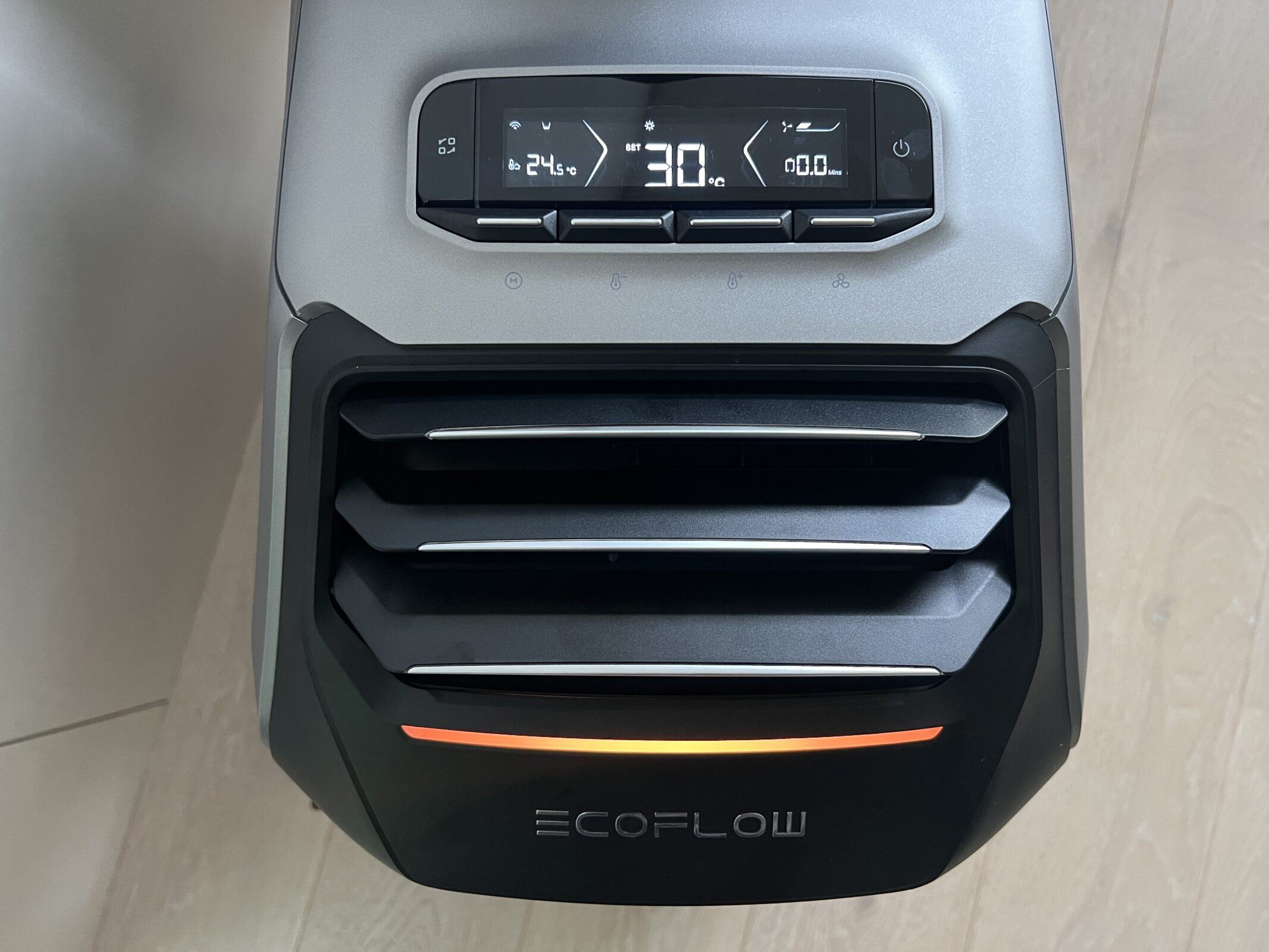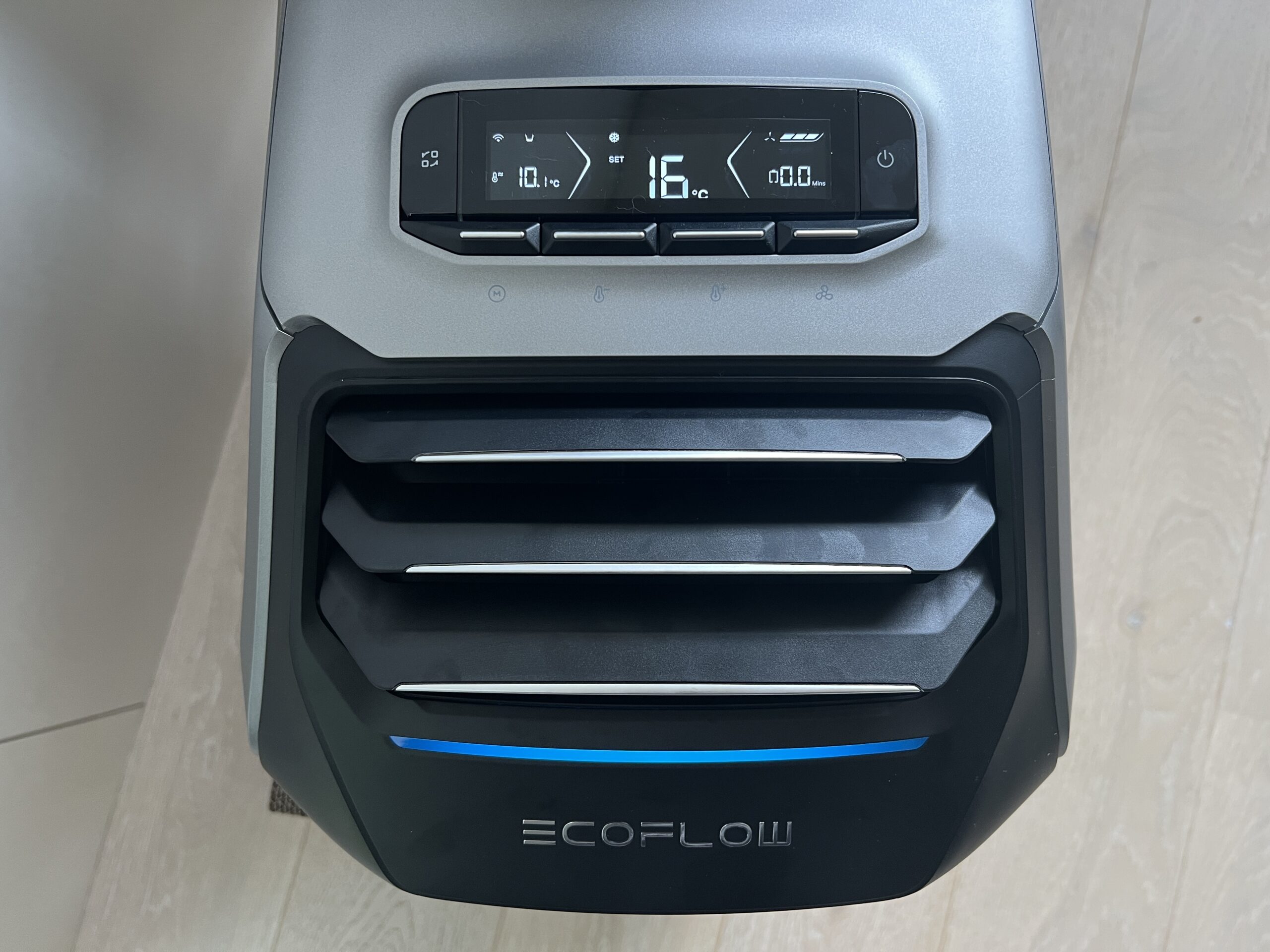There are some days in summer when the temperature in the house is a bit too high for my taste. We then stop cooking and leave the gaming PC off so that the room temperature doesn’t rise too much for the night. The high ceiling height makes it difficult to ventilate the heat.
A fixed split air-conditioning installation would probably be the best solution, but would mean that we would have to lay extra power lines and saw open the outer skin of the house for the lines. Currently, this is still too scary for me to make such interventions in the new house.
Using the building physics tool “Casa Nova”, I know quite precisely how much cooling and heating power our house needs, and the calculations for the heating power were very accurate in the last heating period as far as the heating power requirement was concerned. Therefore, I assume that the calculation for the cooling demand will also fit well, which is generally not very much.
The Ecoflow Wave 2 is actually an air conditioner for camping, vans or small rooms. Because of the forecast of Casa Nova, I assume that it is still sufficient to cool (and possibly even heat) our small 46m² house.
What is important to me is that we can produce as much of the electricity for the house consumption as possible in summer and winter with the PV system. We are already net-positive on average for the year, but that is no reason to optimize further.
It is important to me to have as flat a load profile as possible for the air conditioning system, because this enables us to produce a larger proportion of the electricity ourselves, even if this means that the air conditioning system has to run for longer.
That was also the reason not to go for a standalone unit with 12000BTU and 3kW power, which probably needs to start less often, but whose power peak in the worst case cannot be covered by its own electricity.
The power consumption of the Ecoflow Wave 2 is very low at 0.55-0.6kW. The probability of meeting this demand during the day is very high.
The COP of the air conditioner is 2.7-3.0, which of course will make it interesting to heat with it in winter.

I measure the power consumption with a Shelly Plug S and cut the consumption for a while to see in which mode the system has what power consumption. The ambient temperature is 22°C and the target temperature is set to the lowest value of 16°C.
Cooling

| Cooling Mode Night & Eco |  | max. 170W |
| Cooling Blower level 1/3 |  | max. 240-289W |
| Cooling Blower 3/3 |  | max. 280-306W |
| Coling Mode Max |  | max. 280-370W |
Heating
For heating, I set the climate to 30°C with a room temperature of 22°C.

| Heating Mode Night & Eco |  | 290W |
| Heating Blower level 1/3 | — | — |
| Heating Blower level 2/3 | — | — |
| Heating Blower level 3/3 | — | — |
| Heating Blower Max |  | 483W |
The measured values are below the maximum specified power consumption. I assume that the Ecoflow Wave 2 regulates here according to demand and the delta of 22°C –> target temperature is small enough that it does not have to go to full power. But I can’t prove that. In any case, I am very satisfied.
Ventilation
The ventilation only circulates the air in the room (from the front bottom to the front top). The fans from the rear part of the Ecoflow Wave 2 are deactivated and the compressor does not run either.
| Ventilation 1/3 | 19W |
| Ventilation 2/3 | 23W |
| Ventilation 3/3 | 28W |
Standby
I was wondering why the standby consumption of 3W is much too high. My Siemens dishwasher with Wifi also manages to get by with 1W in standby. Meanwhile, I know that the Ecoflow Wave 2 does not sleep when it is off but continues to send its internal readings via MQTT to ecoflow. This explains the high standby consumption.
| Standby consumption | 3W |
Noise Level
That a 500W compressor and two fans do not run noise-free is clear to me. I don’t want to have to sleep next to the Ecoflow, but if it’s working in the next room, I won’t mind. There is a night/Eco mode in which it is relatively quiet. Here it can even work quite well alongside without being disturbing.
Smartness is missing
The biggest drawback is that the Ecoflow does not have an open API that I can call from the Home Assistant. That means I will have to reverse engineer the Ecoflow data communication myself. Hopefully a little more on that later. I just think it’s a shame that manufacturers can still rest on the fact that they can build “their own shit” without thinking about the integration of their devices into other ecosystems.
Spare parts supply
Currently there is no spare parts supply. A small pin on a ventilation hose has broken off and there are simply no spare parts. A big minus for Ecoflow. This seems to affect not only the Wave 2 but also all other Ecoflow products. This is something that should not be supported. Ecoflow support recommends that I send everything back to the dealer because of a broken 5ct component. WTF.

[…] I bought an Ecoflow Wave 2 air conditioner. Since Ecoflow does not provide an API for the device, I checked the traffic of the Ecoflow app more […]